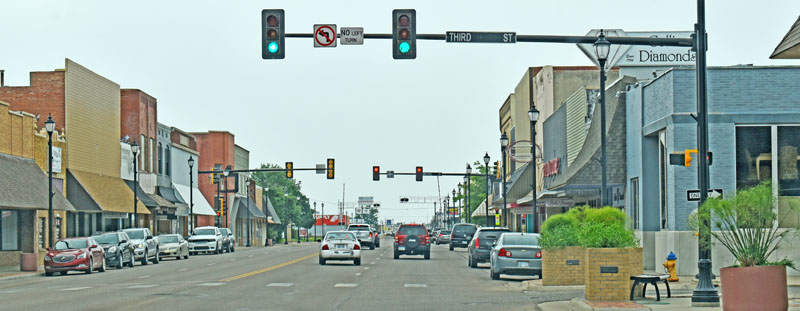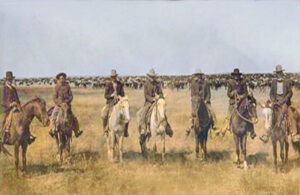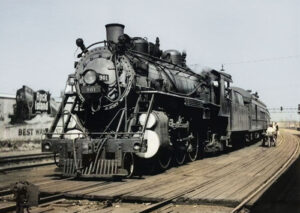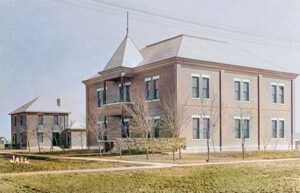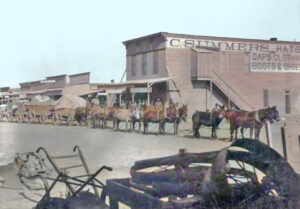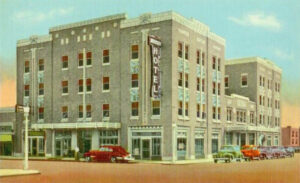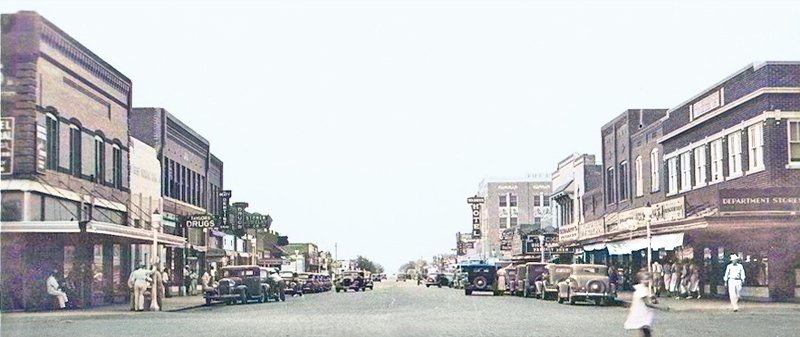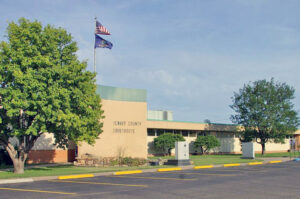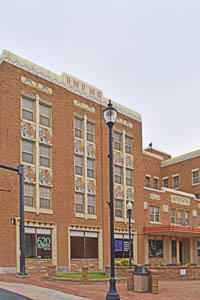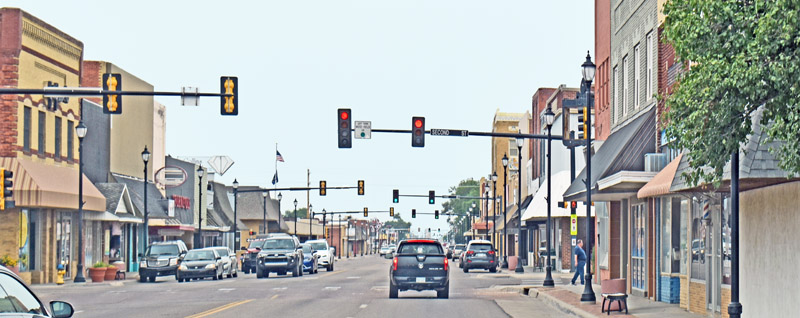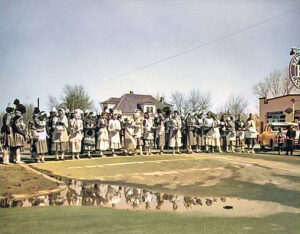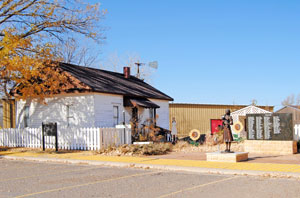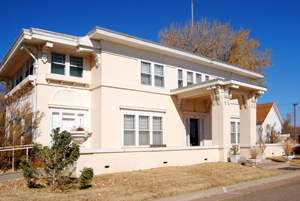Liberal, Kansas, is a city in Seward County and its county seat. As of 2024, the city’s population was 18,743, and the city had a total area of 11.75 square miles, of which 11.61 square miles is land and 0.14 square miles is water.
In 1872, western Kansas was a vast expanse of waving prairie grasslands with one large, flowing river. Settlers traveling west on the Atchison, Topeka & Santa Fe Railroad, or along the Jones & Plummer Trail, and other western cattle trails, passed through, thinking it was an uninhabitable area.
Outside of the Cimarron River, water was very scarce in southwestern Kansas, and there was usually a charge for even a small amount. However, one undaunted man making his way west stopped and settled. Seymour S. Rogers, a rancher, was the first homesteader in what would later become Liberal, Kansas. Rogers became famous in the region for giving free water to thirsty travelers. Reportedly, Liberal gained its name from the typical response to his acts of kindness, “That’s very liberal of you,” from the grateful recipients.
By 1885, Seymour Rogers had opened a general store.
A post office was established on June 14, 1886, a mile west of the present site. It seemed only natural to call the new town Liberal. A school and a store were built within a few months.
As the Chicago, Rock Island & Pacific Railroad extended its line through Seward County, people became interested in the area, and Liberal’s growth began. The Rock Island railroad, upon reaching the end of the line, ordered the surveying and purchase of a new townsite a mile east of the Rogers place. The Kansas Town and Land Company platted the townsite on April 13, 1888. During the following 24 hours, the sale of lots totaled $180,000, of which $60,000 was paid in cash. Within a week, there were 83 wooden houses in Liberal.
Within a year, Liberal was incorporated as a third-class city with a population of 800.
In 1890, the first city-owned wells were dug along Kansas Avenue. Pipes supplied the business section, but homes kept large barrels in front of the house, which were filled twice a week for a fee of 50¢ per barrel.
Because of its location on the railroad, Liberal became a significant trading and shipping point, and it grew rapidly. Its citizens wanted the county seat.
In the next few years, citizens moved their homes and businesses from Fargo Springs, Arkalon, and Springfield to Liberal, which became the county seat on December 8, 1892. The first courthouse was a two-story structure designed by J.M. Smith and built that year.
In 1899, Liberal installed its first City lights. They consisted of coal-oil lamps placed on street corners on 8-foot poles and were the pride of the City. Local people bragged about being able to read their mail under the street lights.
The railroad is credited with keeping Liberal alive in the early years before 1900. Liberal started as a boom town, but, like many places, it lasted only a short time because hard cash was practically nonexistent. Many people became discouraged and left, with many returning home or moving on to try their luck in the Oklahoma Panhandle. Those who stayed, however, achieved comfortable homes, and many became moderately wealthy. The 426 people in Liberal in 1900 were the only ones standing between the city and the fate of half a dozen or so ghost towns that surrounded it. Except for the residents’ faith in the future of this town and the railroad, Liberal could have experienced the same fate as those surrounding it.
Some maize and kaffir corn was raised with some success in the early 1900s. Other crops that were tried were castor beans and broom corn. The beans grew well and brought reasonable prices, but proved to be poisonous to cattle.
Liberal’s growth in the first decade of the 20th century was the typical result of the area’s increasing prosperity, not a temporary boom. It was an important shipping point for grain, livestock, and produce. Broom corn proved very successful, with many hundreds of acres planted. Liberal was known as the broom corn capital of the world, with more broom corn grown, marketed, and handled here than anywhere else at the time. Over 800 cars of the product were shipped annually, most of them in August. As a result of becoming the broom corn capital of the world and of other successful farm ventures, some 500 buildings were erected in 1907 and 1908 alone. Today, Arcola, Illinois, holds the broom corn title.
A few electric street lights were added to the business district in 1908, but homes still used coal-oil or kerosene lamps.
In 1909, a successful $45,000 waterworks bond was voted in.
Hard winter wheat was brought to Seward County from the eastern counties, and by 1910, it had replaced broom corn as the primary crop. Hard winter wheat could withstand the hot, dry weather and proved to be the best variety for milling into flour.
Liberal’s population was 1,716 in 1910. At that time, it continued to be on the Chicago, Rock Island & Pacific Railroad, had two banks with a combined capitalization of $50,000 and deposits of nearly $350,000, a weekly newspaper called the Independent, a large number of substantial business houses, telegraph and express offices, and an international money order post office with four rural routes.
In 1911, a huge tank was erected along with a pipe system for the rest of the City at 7th and Grant.
With improvements from horse-drawn to mechanized farming, farms became larger. The Angell one-way plow revolutionized wheat production in dryland Seward County.
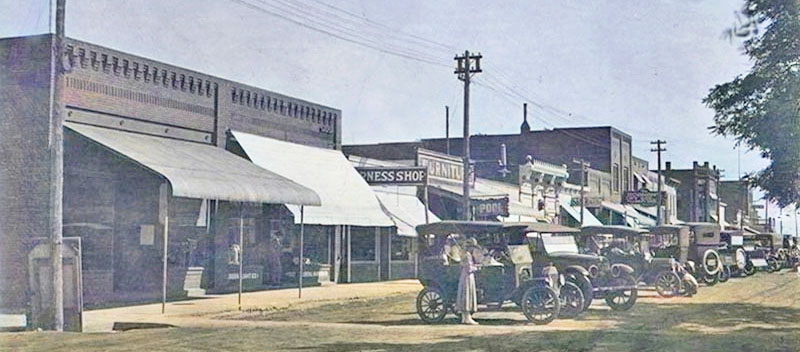
Street scene in Liberal, Kansas, in about 1920.
In 1917, three more wells and another giant standby pipe were added to the water system.
In 1920, gas was discovered west of Liberal, which was to become the massive Panhandle-Hugoton Gas Field. The Hugoton Gas Field became the world’s largest gas reserve.
The discovery of deep-well irrigation and the use of natural gas as a fuel enabled the cultivation of many kinds of crops. These include corn, milo, alfalfa, sugar beets, and wheat. Farmers are now able to produce all the feeds necessary for the production of hogs and cattle.
On February 21, 1929, the Liberal News reported that the Chamber of Commerce decided to undertake a project to secure commitments for a new modern hotel to be built in downtown Liberal. Plans were drawn up for an 86-room, four-story hotel at the corner of Third and Kansas Avenue, a state charter was secured, bylaws were adopted, and officers elected.
The estimated construction cost was $175,000; $50,000 in common stock was already subscribed, $25,000 was to be sold to the town at large, and the balance would be sold as preferred stock.
Charles Ellis of Wichita, Kansas, was selected as the architect, and the HW Underhill Construction Company was named the general contractor, with a bid of $155,000 and a 23-week construction schedule.
On February 22, 1930, the Liberal Hotel Company entered into an operating lease with Warren E. Smithers and Guy T. Helvering of Salina, Kansas, to operate the hotel. It was initially named the Wheatland Hotel, but was later renamed the Warren Hotel because the lessees operated two other hotels in Kansas under that name.
The final cost of construction and furnishing was estimated at $250,000.
Its grand opening, on April 4, 1930, drew an estimated crowd of 6,000, according to hotel operator Guy Helvering. The hotel opened with 81 rooms, a coffee shop, Malone’s Drug Store, Griffith and Baughman Real Estate Offices, Warren Hotel Barbershop, and Dr. C.E. Phillips, MD. The building’s exterior reflected the Art Deco style of the 1920s and 30s, with graphics highlighted by chevrons, triangles, stepped patterns, spirals, and fronds rendered in brilliant colors.
In early 1951, oil was discovered southwest of Liberal. During exploration, two gas production layers beneath the Hugoton Gas field were discovered, extending the life of gas in this area into the next century.
The Warren Hotel served as the Liberals’ downtown hotel under Smithers and Helvering until 1953, when their interest was sold to Mr. and Mrs. N S Lepley.
The present Seward County courthouse was built from 1956 to 1957. The modern-style building was designed by W.I. Fisher and Company and constructed by the Irvinbilt Company. The west-facing building is a one-story buff-colored brick, glass, and concrete structure located on landscaped grounds in the center of Liberal.
In 1963, the world’s largest helium plant, National Helium, was opened. That title of “largest” has since been taken by the Shute Creek Gas Plant in La Barge, Wyoming.
The Lepleys sold their interest in the Warren Hotel in 1963 to Mr. and Mrs. Bob Ross, who managed the hotel until 1970, when they sold it to Jim Kemper. Jim Kemper’s son took over the building in 1974, but it became disused sometime in the late 1970s.
A series of deed transactions resulted in the building being owned by the Landmark Center, Inc., in September 1981. In 1982, the old Warren Hotel building was gutted, and Strait and Associates of Colby, Kansas, were engaged as the renovation architects, and Kanco Construction of Colby was the general contractor.
The renovated Warren Hotel Landmark Center, which now encompasses the 1930s adjacent building known both as the “Mercantile” and “Woolworth Building” contains 15 condominiums in place of the original 81 hotel rooms on the upper floors, nine retail and professional business suites on the ground floor, 10,000 square foot retail and event facility in the basement, and an additional 9,000 square feet of retail and professional space in the Mercantile/Woolworth building. The elegant two-story hotel lobby with its two large Art Deco chandeliers remains a focal point of the Landmark Center. A 19-car private garage is attached facing Washington Street, with an additional public parking lot.
The Center’s historic lobby and hallways lend themselves to serving as an exhibit space honoring Liberal’s history from 1888 to the 1930s.
Liberal’s population peaked at 20,525 in 2010.
Today, energy and agriculture are the main economic drivers of the area. Natural resources include oil, natural gas, water, gravel, and sand. The beef industry, including ranches, feedlots, and packing plants, is Liberal’s largest employer. Hard winter wheat, corn, milo, alfalfa, and cotton are common crops. Trucking is a primary industry. Dairies and pork processors are a growing business.
The three industries employing the most significant percentages of the labor force are manufacturing (24.4%); educational services, health care, and social assistance (19.4%); and retail trade (10.5%).
The cost of living in Liberal, Kansas, is 11% below the U.S. national average and 13% below the state average. Nearly 70% of commuters drive less than 15 minutes to reach their workplace. On average, Liberal has 20% more days of sunshine than the national average.
The community is served by the Liberal USD 480 public school district, which operates 12 schools in the city. There is also a Christian school in Liberal: Fellowship Baptist School (K–12). Liberal is also the home of Seward County Community College.
Liberal is famous for its annual Pancake Day race, held in competition with Olney, United Kingdom, for the fastest time between the two cities. Every year on Shrove Tuesday—the day before Ash Wednesday, often called “Fat Tuesday”—a unique tradition unfolds! The origins of Pancake Day stretch back to Old England, where housewives would heed the church bell’s call to be “shriven” of their sins. In 1950, the spirit of friendly competition sparked an international phenomenon when the Liberal Jaycees issued a playful challenge to Olney, England, to participate in a transatlantic race to see which town’s women could sprint the 415-yard course the fastest. Today, the International Race remains a beloved spectacle, run simultaneously at 11:55 a.m. in both communities. It’s a truly unique event, open exclusively to adult women performing “housewifely” duties, who still honor tradition by wearing a skirt, headscarf, and apron. And yes, they must run while carrying a skillet and pancake, flipping it at both the start and finish lines to prove it’s still there!
Liberal also features the fifth-largest collection of civilian and military aircraft in the United States, which is at the Mid-America Air Museum. Founded with a gift of 50 planes from General Thomas Welch, Jr., the museum now houses more than 100 aircraft. The aerospace and aircraft museum is located at the Liberal Mid-America Regional Airport, 2000 W 2nd Street, in Liberal, Kansas.
Dorothy’s House, the Land of Oz, and the Coronado Museum at 567 E. Cedar Street in Liberal offer history and fun in one location. Visitors can enjoy an immersive Wizard of Oz Tour that combines a colorful recreation of the film with stories of actual life on a 1900s farmhouse. Admissions pricing applies only to the guided tour of Dorothy’s House and the Land of Oz. The Coronado Museum is always free for all visitors.
The Coronado Museum has items from Native Americans who lived in the area, as well as items from Francisco Vásquez de Coronado’s 1541 expedition, and the history of farming and ranching in the county in more recent times. The museum features a collection of items used in the settlement of the Kansas Territory during its Wild West days. Visitors can see weapons, an antique organ, quilts, and home furnishings. In addition, there is an exhibit that pays tribute to the culture of the Native American Indians who lived on the land long before Coronado set foot here. Traveling exhibits featuring artifacts from other museums and collectors are also a significant part of the Seward County Historical Museum.
Liberal Mid-America Regional Airport is immediately west of the city. Publicly owned, it has two operational paved runways and is primarily used for general aviation. United Express provides daily flights to Denver.
The Tucumcari Line of the Union Pacific Railroad runs parallel to U.S. 54 northeast–southwest through the city.
Liberal is located in southwestern Kansas, approximately ten miles southwest of the Cimarron River. It is located along U.S. Route 54, near the Kansas-Oklahoma state line. It is 140 miles north-northeast of Amarillo, Texas, 202 miles west-southwest of Wichita, and 288 miles southeast of Denver, Colorado.
©Kathy Alexander/Legends of Kansas, November 2025.
Also See:
Sources:
Blackmar, Frank W.; Kansas: A Cyclopedia of State History, Vol I; Standard Publishing Company, Chicago, IL 1912.
City of Liberal
Fort Hays State University
Visit Liberal
Wikipedia

